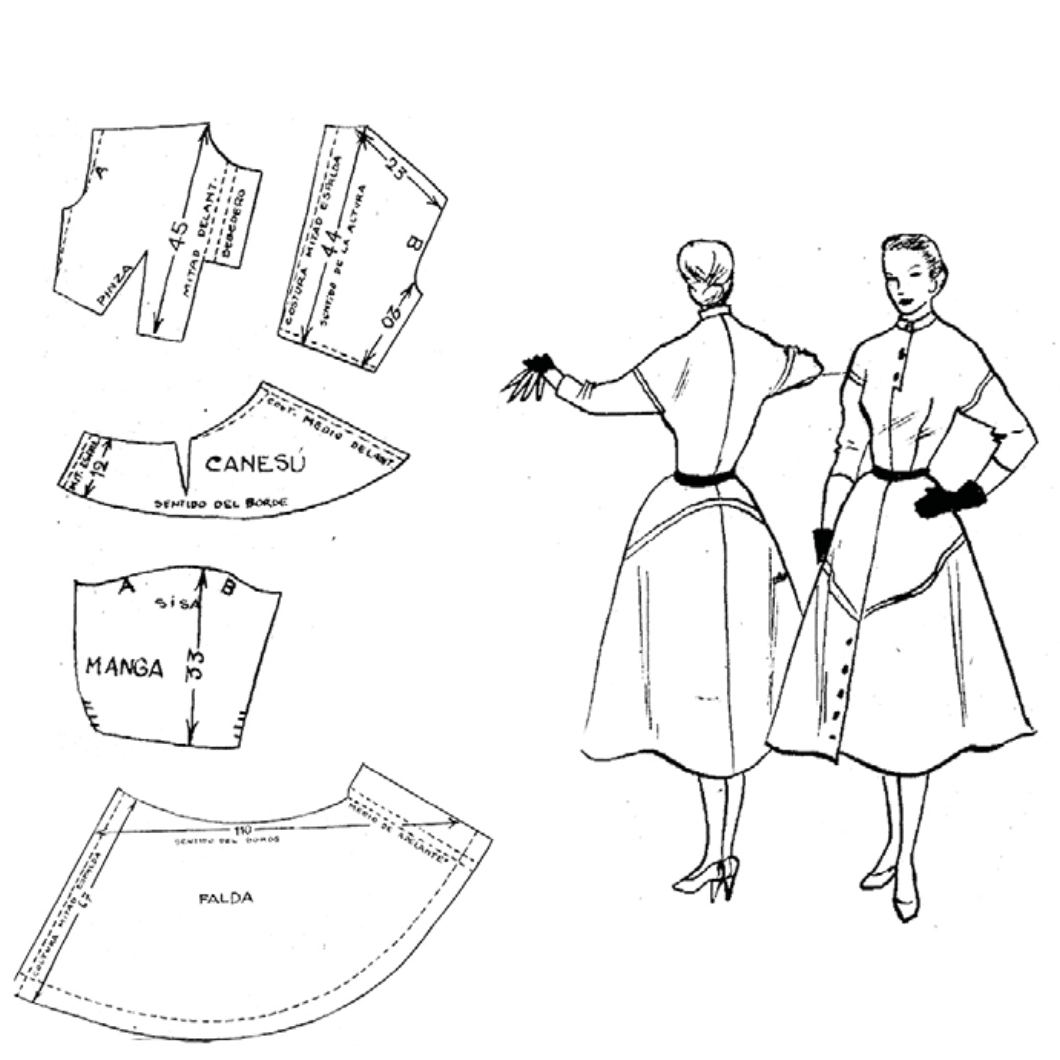Women's magazines and development of the female labor force in Valparaíso Analysis of the graphic system of rosita magazine (1947-1972), as a didactic strategy for informal learning of sewing.
Main Article Content
Abstract
Dressmakers and seamstresses formed an important labor force in Chile, in the first half of the twentieth century, mainly in Valparaiso, where the textile industry developed at the eaves of port activity. In this context, the publishing industry in women's magazines detected the need for those women who sought to develop these trades from home, to join the labor market without neglecting their families. Magazines such as Rosita, Familia, Eva and Margarita, among others, began to incorporate dressmaking lessons between their pages. Rosita developed a real graphic system composed of different columns to teach sewing. Each aimed at a different stage of the process of producing tailored garments. From the perspective of graphic design, some questions arise: How does an informational graphic system work in women's magazines? What visual variables contribute to an understanding of the manufacture process? This project seeks to analyze the graphical components of sewing columns of Rosita magazine (1947-1972), to try to determine the extent to which a graphic system constitutes a tool for informal learning. At the same time to rescue the graphic heritage value of the magazine and its contribution to economic independence of women, seeking to empower them through the activity of sewing.
Article Details
References
Álvarez, P. (2009). Diseño chileno, de la adolescencia a la adultez. Revista Patrimonio Cultural, Nº 50. Recuperado de http://www.patrimoniodechile.cl/688/articles-72993_archivo_01.pdf
Costa, J. y Moles, A. (1991). La imagen didáctica. España: Enciclopedia del Diseño.
Couyoumdjian, J. (2000). El alto Comercio de Valparaíso y las grandes casas extranjeras 1880 -1930. Seminario de Grado para Optar al Grado de Licenciado en Historia. Santiago: Pontificia Universidad Católica de Chile.
García Huidobro, C. y Escobar, P. (2012). Revistas Femeninas. Una historia de las revistas chilenas. Santiago: Universidad Diego Portales.
Herrera, A. y Toro, E. (2013). Costureras, sastres y modistas: Contexto manufacturero en Valparaíso, 1890-1960. Valparaíso: Proyecto financiado por el Fondo Nacional de Desarrollo Cultural y las Artes.
Salinas, J.L. (2014). Linda, regia, estupenda: Historia de la moda y la mujer en Chile. Santiago: El Mercurio Aguilar.
Toro, E. (2013). Escuelas de corte y confección: la desaparición de un ocio. Entrevistado por De la Fuente, E. El Mercurio p.20 24 de septiembre 2013. [online] Extraído el 8 de Enero de 2019: <http://diario.elmercurio.com/detalle/index.asp?id={a34877b8-8e4e-45e3-ad97- 1948564e132b} >.


